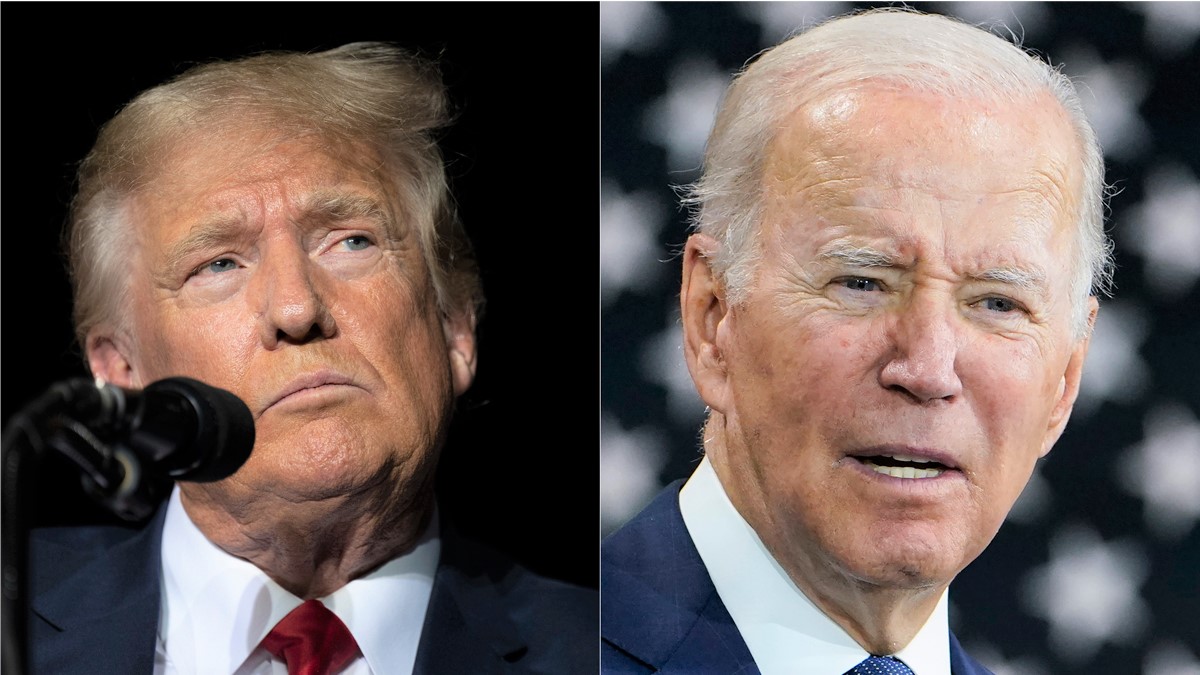
If Trump or Biden Withdraws, What Impact on the US Election?

President Joe Biden and former President Donald Trump are on track for a rematch in the presidential election on November 5. Polls show that Trump holds a commanding lead over all other Republican candidates, while no major Democratic figure is challenging Biden for his party’s nomination.
However, questions about Trump’s legal difficulties and both candidates’ ages lurk in the background. Trump faces 91 felony charges, with at least one criminal trial expected this year. And health issues could affect either Trump, 77, or Biden, 81.
What would happen should either of them be forced to drop out of the race because of health, legal or other reasons? The answer depends on when such a scenario occurs.
Between January 15 and party conventions
States hold caucuses and primary elections between January 15 and June 4, 2024. The two candidates who win the most delegates will officially become their parties’ nominees during the conventions. The Republican National Convention will be July 15-18 in Milwaukee, Wisconsin. The Democratic National Convention will take place August 19-22 in Chicago, Illinois.
Both Trump and Biden are expected to be nominated by their respective parties. But should one drop out between the start of the caucus-primary season and his party’s convention, some states may extend candidate filing deadlines and primary dates to allow more people into the race, depending on when it occurs.
Such extensions are more likely to happen with Democrats, as Biden has no significant competitor. His challengers, Representative Dean Phillips and author Marianne Williamson, lack name recognition and already do not qualify to be on the ballots of several states.
“They would want there to be a semblance of the primaries,” said John C. Fortier, a research fellow focusing on elections and continuity of government at the American Enterprise Institute. “It would be very short notice, but they would get to go before the people,” he told VOA.
Even with processes in place, there may not be time to change the names on the ballots, and primary voters may end up seeing the name of a deceased or incapacitated candidate when they vote. With early voting allowed by some states, a candidate who dropped out might already have collected votes.
In that instance, states may enact emergency changes in laws to allow delegates to switch their votes to a new candidate during the convention. To win at the nomination, a Republican candidate needs at least 1,215 out of 2,429 delegates, and a Democratic candidate needs 1,969 out of 3,936.
“It may not be someone who is currently in the race,” said Michael Thorning, director of structural democracy at the Bipartisan Policy Institute. “It might be someone that the convention determines is the best standard bearer for the party and the person most likely to win in the general election,” he told VOA.
Between conventions and Election Day
Each party has its own set of rules should its candidate drop out during this period, but in essence it would replace the candidate’s name on the presidential ballot. Emergency changes to some state laws may be required.
“There is a technical process where not the whole convention but a smaller group of people who lead the party, people who are really not known to Americans, can make that decision to put someone else as the nominee,” Fortier said. He added that the parties would likely need to make an appeal to the American people and explain to them why the new candidate has legitimacy.
While Vice President Kamala Harris could be asked to be the top of the Democratic ticket, for example, it’s not required by law.
“The running-mate status at that point does not confer any guarantee that they would accede to the presidency,” Thorning said.
Again, there may not be time to replace the name of the former candidate on the ballots, and that candidate may already have votes because of early polling.
Between Election Day and Electoral College meeting
After questions or challenges about election results are settled, electors in each state will meet on December 17 to select the president-elect and vice president-elect.
Should Trump or Biden die or become incapacitated during this time, his vice president-elect would not automatically be the replacement, as provisions of the presidential line of succession law do not yet apply.
The replacement process during this period is essentially the same: Electors of the president-elect would vote for a new candidate. There is no federal guidance on the process, and some states have their own rules on how electors vote.
The vice president-elect would be a logical choice but not one guaranteed by law.
If the electors cannot agree on a new president-elect, under the 12th Amendment, the House of Representatives would elect the president, and the Senate would elect the vice president, in a procedure known as “contingent election.”
Until Congress appoints a new president-elect, under the 20th Amendment, the vice president-elect becomes acting president.
Between Electoral College meeting and congressional certification
It’s not clear what would happen if a candidate dies or becomes incapacitated between the December 17 meeting of electors and the January 6 counting and certification of electoral votes in Congress.
Between congressional certification and Inauguration Day
According to the 20th Amendment, the vice president-elect would be inaugurated as president on January 20, 2025, if the president-elect dies or is incapacitated after Congress certifies the election result.
In each period, there is the potential for a legal and political crisis, particularly if the election result is contested as it was in 2020. With Democrats holding a slim majority in the Senate and Republicans in the House of Representatives, figuring out who will become the next president could become an extremely messy process that drags on in the courts.
And as the country witnessed during the siege of the Capitol by Trump supporters on January 6, 2021, it could again turn bloody.












Comments